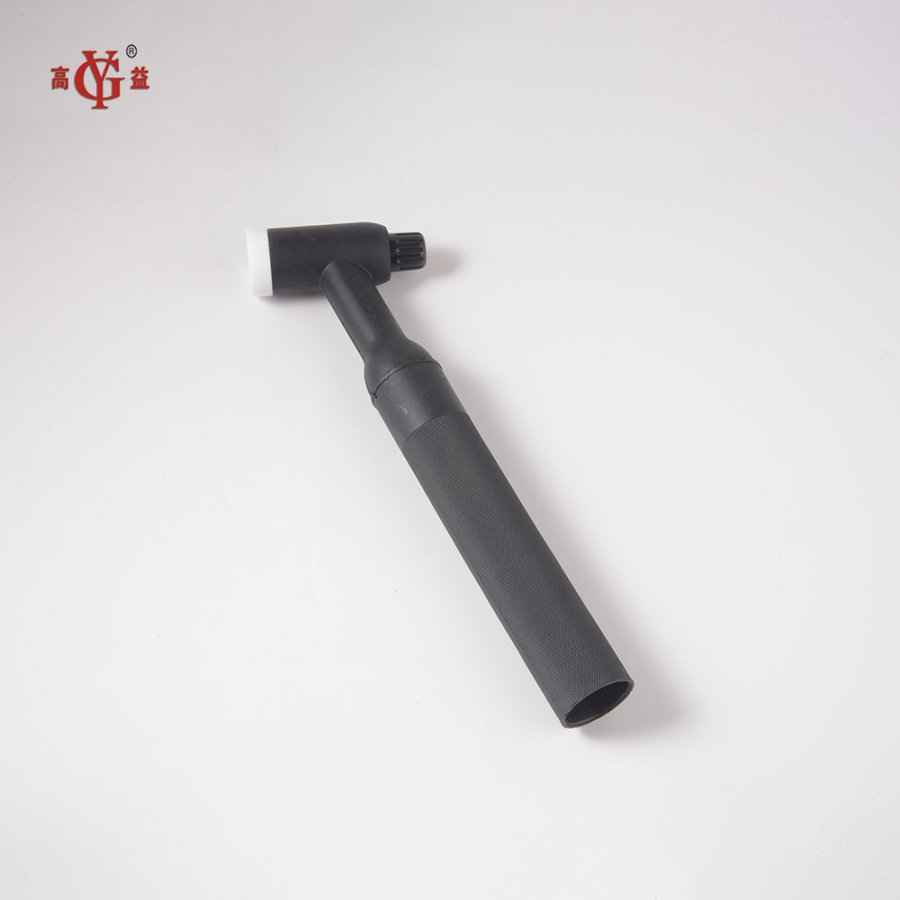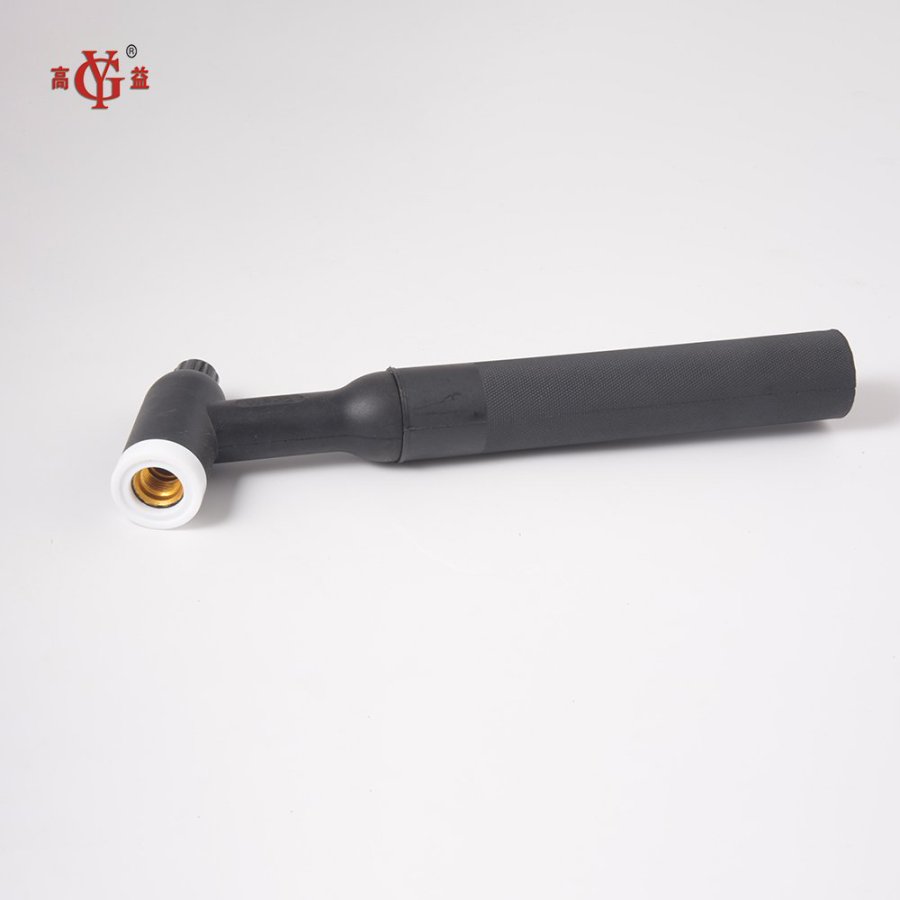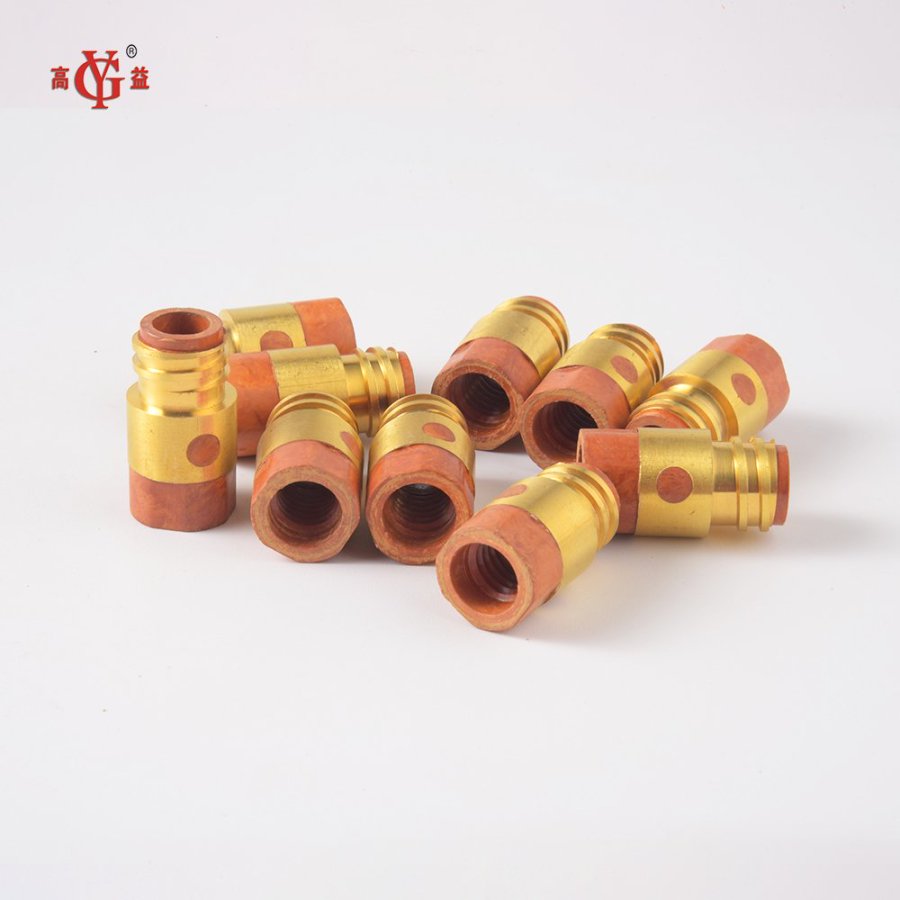Contact us
Argon arc welding torch head
- 产品描述
-
An argon arc welding torch (TIG welding torch) is a welding tool used for argon arc welding (TIG welding). Argon arc welding is a welding method that uses inert gas (usually argon) to protect the welding area, suitable for welding aluminum, stainless steel, magnesium, and other metal materials.
The main components of an argon arc welding torch include:
1. Welding torch head: responsible for generating an arc, usually made of copper with electrodes inside.
2. Electrode: Tungsten electrodes are commonly used, which have a high melting point and can remain stable at high temperatures.
3. Gas hood: used to protect the welding area from oxidation and contamination.
4. Cooling system: During high-temperature welding, the cooling system can help maintain the temperature of the welding torch and avoid overheating.
 5. Gas supply system: Connect argon gas cylinders to provide inert gas required for welding.
5. Gas supply system: Connect argon gas cylinders to provide inert gas required for welding.The advantages of argon arc welding include high welding quality, strong welding joint strength, and wide applicability, which are widely used in fields such as aerospace, automotive manufacturing, and shipbuilding. When using an argon arc welding torch, the operator needs to have certain welding skills and experience to ensure the quality and safety of the welding.

 According to whether the electrode melts during the welding process, gas shielded welding can be divided into non melting electrode (tungsten electrode) gas shielded welding and melting electrode gas shielded welding. The former includes tungsten inert gas welding, plasma arc welding, and atomic hydrogen welding. Atomic hydrogen welding is currently rarely used in production. Tungsten Inert Gas Welding (TIG) welding, abbreviated as TIG welding in English. It is a welding method that uses the arc heat generated between the tungsten electrode and the workpiece to melt the base material and filler wire (if filler wire is used) under the protection of inert gas. During welding, protective gas is continuously sprayed from the nozzle of the welding gun, forming a gas shielding layer around the arc to isolate the air and prevent its harmful effects on the tungsten electrode, molten pool, and adjacent heat affected zone, thereby obtaining high-quality welds. The protective gas can be argon, helium, or a mixture of argon and helium. In special applications, small amounts of hydrogen can be added. Tungsten inert gas arc welding, which uses argon gas as a shielding gas, and tungsten helium arc welding, which uses helium gas, are much more widely used in industry due to the high cost of helium gas. This chapter takes tungsten inert gas welding as a typical example and introduces tungsten inert gas welding. In some places, the unique properties of helium and tungsten helium arc welding are also explained
According to whether the electrode melts during the welding process, gas shielded welding can be divided into non melting electrode (tungsten electrode) gas shielded welding and melting electrode gas shielded welding. The former includes tungsten inert gas welding, plasma arc welding, and atomic hydrogen welding. Atomic hydrogen welding is currently rarely used in production. Tungsten Inert Gas Welding (TIG) welding, abbreviated as TIG welding in English. It is a welding method that uses the arc heat generated between the tungsten electrode and the workpiece to melt the base material and filler wire (if filler wire is used) under the protection of inert gas. During welding, protective gas is continuously sprayed from the nozzle of the welding gun, forming a gas shielding layer around the arc to isolate the air and prevent its harmful effects on the tungsten electrode, molten pool, and adjacent heat affected zone, thereby obtaining high-quality welds. The protective gas can be argon, helium, or a mixture of argon and helium. In special applications, small amounts of hydrogen can be added. Tungsten inert gas arc welding, which uses argon gas as a shielding gas, and tungsten helium arc welding, which uses helium gas, are much more widely used in industry due to the high cost of helium gas. This chapter takes tungsten inert gas welding as a typical example and introduces tungsten inert gas welding. In some places, the unique properties of helium and tungsten helium arc welding are also explained
Keywords:
Get More Product Information For Free
Feel free to leave us a message for any inquiry, we will respond within 24 hours.











